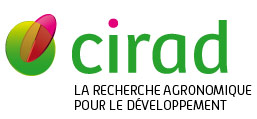Development of SNP markers present in expressed genes of the plant-pathogen interaction: Theobroma cacao - Moniliophtora perniciosa
Lemos L.S.L., Gramacho K.P., Pires J.L., Ferreira Santos R.M., Ganem R.S., Costa M.G.C., Micheli F.. 2017. AgroTropica, 29 (2) : p. 111-118.
We report the detection, validation and analysis of SNPs in the plant-pathogen interaction between cacao and Moniliophthora perniciosa ESTs using resequencing. This analysis in 73 EST sequences allowed the identification of 185 SNPs, 57% of them corresponding to transversion, 29% to transition and 14% to indels. The ESTs containing SNPs were classified into 14 main functional categories. After validation, 91 SNPs were confirmed, categorized and the parameters of nucleotide diversity and haplotype were calculated. Haplotype-based gene diversity and polymorphic information content (PIC) ranged from 0.559 to 0.56 and 0.115 to 0.12; respectively. Also, it was the advantage when considering haplotypes structure for each locus in place of single SNPs. Most of the gene fragments had a major haplotype combined to a series of low frequency haplotypes. Thus, the re-sequencing approach proved to be a valuable resource to identify useful SNPs for wide genetic applications. Furthermore, the cacao genome sequence availability allow a positional selection of DNA fragments to be re-sequenced enhancing the usefulness of the discovered SNPs. These results indicate the potential use of SNPs markers to identify allelic status of cacao resistance genes through marker-assisted selection to support the development of promising genotypes with high resistance to witch's broom disease.
Mots-clÃĐs : theobroma cacao; moniliophthora; relation hÃīte pathogÃĻne; interactions biologiques; polymorphisme gÃĐnÃĐtique; rÃĐsistance gÃĐnÃĐtique; rÃĐsistance aux maladies; sÃĐquence nuclÃĐotidique; gÃĻne; identification; bahia; moniliophthora perniciosa; sÃĐquencage
Documents associÃĐs
Article (b-revue à comitÃĐ de lecture)
Agents Cirad, auteurs de cette publication :
- Micheli Fabienne — Bios / UMR AGAP
